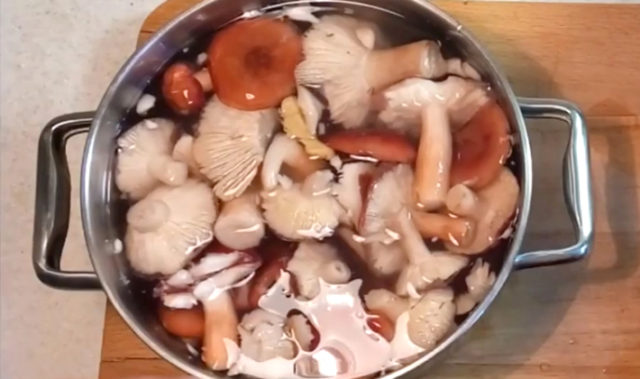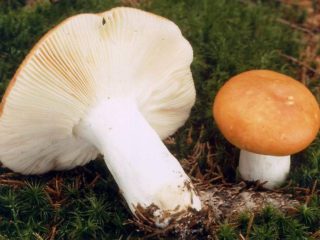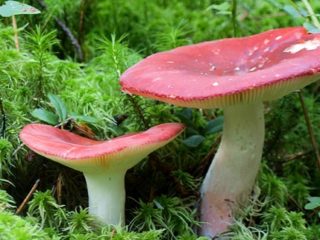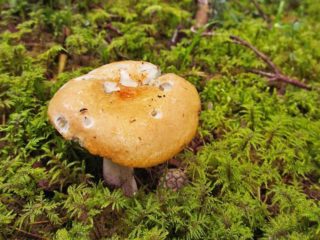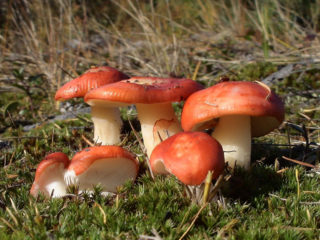Content
Mushroom picking is a very exciting activity for both amateurs and avid mushroom pickers. Mushrooms are not only tasty, but also useful as a source of protein: nutritionists jokingly call them "forest meat", one of the most famous types of which is russula. They are ubiquitous and easy and fun to collect. They are fried, boiled, salted, pickled. But not everyone knows whether russula needs to be cleaned and how to do it correctly so that they remain intact and do not fall apart.
How to handle russula after harvest
Russula, like all other mushrooms, is a perishable product, and after harvesting, they must be quickly peeled. If this rule is not followed, the processes of decay of protein compounds and the formation of toxic substances will begin in them.
The collected russula must be subjected to primary processing immediately after collection - cleaned of debris, dirt, moss and rinsed well before starting cooking. Cleaning methods for russula will depend on their condition and place of growth. If they were collected in moss or grass, it will be enough to remove the wormy ones, for the rest - lightly scrape the cap and rinse thoroughly with water. If russula were found on sandy areas, it is necessary to first clean the legs from earth and sand, then cut off the edges and only then rinse.
How to wash russula mushrooms
Washing will help to thoroughly clean the mushrooms from various debris. Russula are very fragile and tender. If you don't handle them carefully enough, they will literally crumble in your hands. To prevent this from happening, after collecting them, they must be cleaned by placing them in a large, spacious container filled with water. Some of the dirt will float or settle at the bottom. After a while, the water should be changed. Repeat soaking until all mushrooms have been completely cleaned.
The hats are covered with a sticky film that can collect a lot of forest debris. To get rid of it, after soaking, the mushrooms are placed under a stream of clean water. This will help clean them of adhering dirt, leaves and blades of grass.
Russula cleaning
Cleaning russula is no different from cleaning other mushrooms. And it should start already at the stage of collection. This will take a certain amount of time. Large russules, unlike small ones, should be cleaned more thoroughly. You need to pay attention not only to the legs, but also to the hats. This must be done correctly, following a certain sequence of actions.
Do I need to peel the russula from the film and skin
Small mushrooms can be eaten without removing the film and skin. This will not affect the taste of the finished dish. Large specimens are recommended to be cleaned of these elements. When boiling, salting or stewing, the film and skin begin to taste very bitter.
It is not easy to clean the film from the cap, but sometimes it is more advisable to leave it. The film preserves the integrity of the mushrooms and prevents them from falling apart during cooking.But it is she who is the reason that bitterness appears in mushroom dishes after cooking, which can be eliminated if the water in which the soaking was carried out is drained, poured in a new one and boiled russula for 20 minutes.
Why clean russula hats
The ubiquity of mushroom growth makes them dangerous to human health without proper cleaning and processing. The film covering the caps, like a sponge, absorbs all harmful substances from the environment. Chemicals and exhaust gases are concentrated in large quantities in mushrooms. Therefore, before you start cooking, in order to observe precautions, you should remove the film from the russula.
In addition, it is not recommended to collect old russula. They can be easily identified by the color of the flesh; in unsuitable mushrooms, it turns yellow. Even if outwardly such a copy looks whole and strong, it is not worth collecting.
How to properly clean russula mushrooms
To properly clean the russula, so that they do not break, you should perform a few simple steps:
- Cleaning the mushrooms requires a knife, paper napkins, and a colander.
- It is necessary to cut off the tips of the legs and clean them of adhering sand and earth.
- If worm-like passages are visible on the cut of the leg, such mushrooms must be thrown out immediately.
- Darkened areas should be cut out.
- To clean the stuck forest debris, it is enough to lightly scrape it with a knife. Dirt often collects in the tubular layer, so it is also important to clean it quickly and carefully with a knife.
- After that, wipe each mushroom with a dry cloth, which will remove the remaining small debris and remove excess moisture.
- Remove the film from the cap with a knife and peel the russula from the skin, moving from the edges to the center. Don't worry if some part can stay in the center. But the hats of red and bright blue should be tried to be cleaned completely. They have increased bitterness.
- Place in a colander and rinse thoroughly under running cold water.
Soaking russula
One of the points for processing and cleaning large russula after harvesting is soaking. This procedure is simple and does not require any special effort. But the gifts of the forest processed in this way can be safely used for cooking. All bitterness will be removed from them, as well as all insects hidden in the deepest parts of the plate caps.
Do I need to soak russula
Depending on how the russula will be prepared in the future, a decision is made on the need to soak them. Before frying, it is recommended to soak and boil all lamellar mushrooms, since there is a great possibility of getting poisoned. Before cooking the russula, it is enough just to thoroughly rinse and clean under running cold water. Mushrooms to be dried must not be soaked. They are cleaned with a dry brush.
Soaking the mushrooms takes a long time. If this is not possible, it is recommended to boil them in salted water before cooking.
How to soak russula
In order to clean and soak the mushrooms, it is necessary to prepare a special saline solution from the following components:
- 1 tsp salt;
- 1/3 tsp citric acid;
- 1 liter of water.
After that, combine everything, mix thoroughly and pour the mushrooms cleaned from debris with the resulting composition. The saline solution must be changed three times during the day.
How much russula to soak
For pickling mushrooms, the soaking time is usually 10 to 12 hours. This is sufficient to remove bitterness and remove insects.
If the mushrooms are harvested for subsequent frying, the soaking time can be reduced to 30-60 minutes. During this time, they will have time to soak and cleanse of specks and blades of grass, and further heat treatment neutralizes the taste of bitterness.
Useful Tips
In order for the collected russula to retain their integrity and delight you with a rich mushroom taste after cooking, you must follow the advice of experienced mushroom pickers and properly clean and process them:
- If russula cannot be processed and cleaned immediately after collection, they must be sorted out, thrown out those in which worm paths are found, and the rest laid out in one row and put in a cool place. This will keep them fresh for several hours.
- Russula spoil very quickly and therefore it should take no more than 5 hours to clean and process them.
- So that russules do not crumble in the hands during the cleaning process, it is recommended to place them in boiling water for 15 minutes before starting treatment. This will give them elasticity and density.
- To shorten the time for home cleaning, leaves and large debris should be removed from the legs and hats while still in the forest.
- Lamellar mushrooms, cut in half, will help locate worms on site. They should not be stacked with the rest, much less carried home.
- The caps are easy to clean with a soft bristled toothbrush. It will gently sweep debris out of all folds without destroying the mushroom itself.
These simple tips will help you clean russula properly, keeping their shape, freshness, beneficial properties and taste.
Conclusion
Cleaning russula is not as fun as collecting. But if you follow certain rules, this process will be effective, will not take much time and effort, and will allow you to protect future mushroom dishes from insects or the taste of sand on your teeth.

